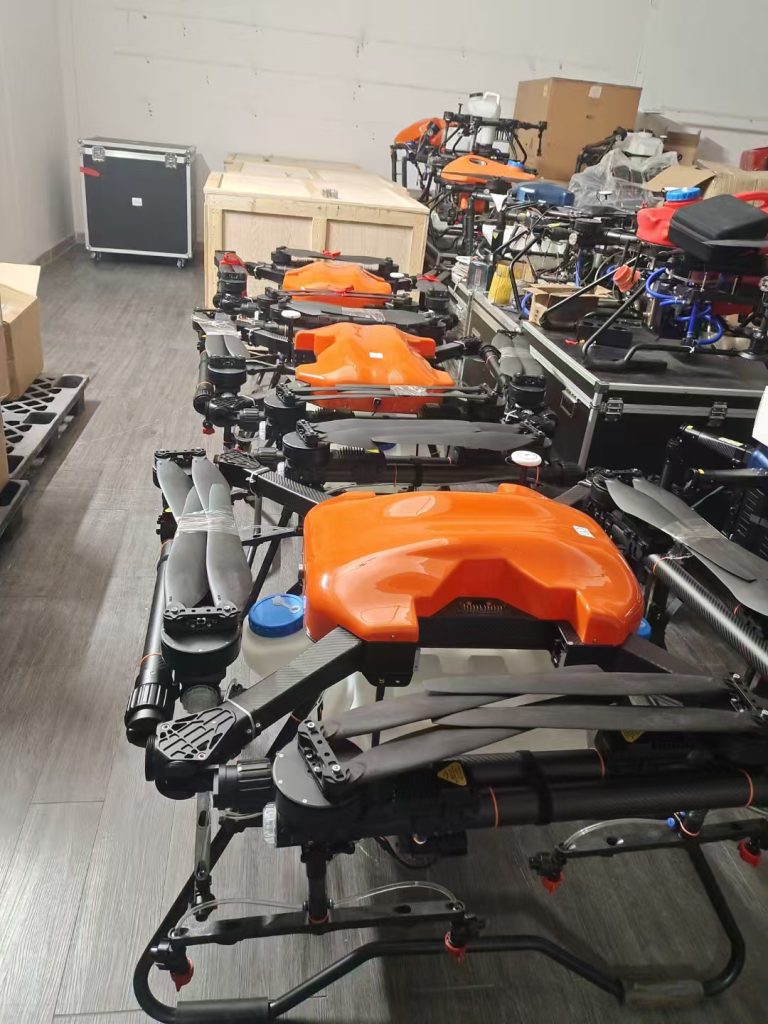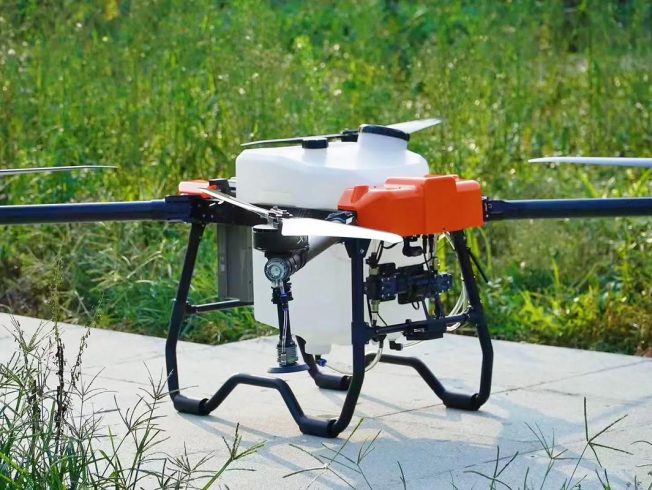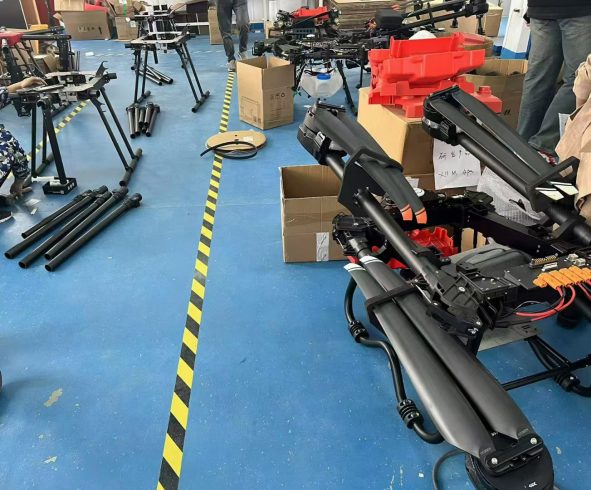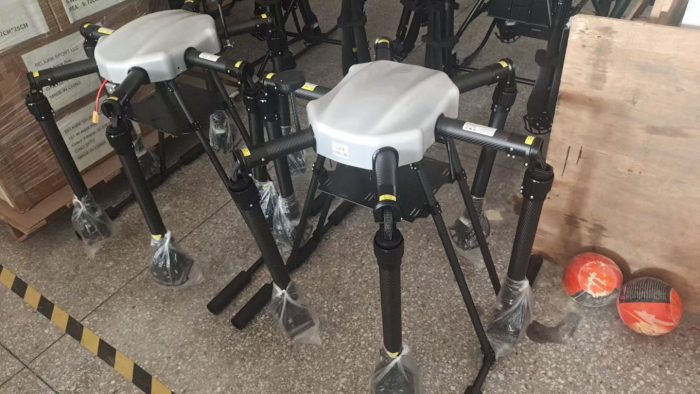
The global agricultural sector is under increasing pressure to feed a growing population while combating pesticide resistance, environmental harm, and climate change. Enter CRISPR biopesticide drones—a revolutionary fusion of gene-editing technology and precision agriculture. By leveraging CRISPR-engineered biopesticides and autonomous drones, this innovation promises to target pests with unprecedented accuracy, reduce chemical reliance, and enhance crop resilience. This article explores how CRISPR biopesticide drones work, their transformative potential, and their role in shaping sustainable farming practices.
—
1. What Are CRISPR Biopesticides?
CRISPR biopesticides utilize gene-editing technology to enhance natural biological agents, such as bacteria, fungi, or plant extracts, enabling them to combat pests more effectively. Unlike synthetic pesticides, these biopesticides are tailored to specific pests or crops through CRISPR’s precision, which edits the DNA of organisms to amplify their pest-resistant traits or natural toxin production. For example, CRISPR can be used to engineer beneficial microbes that secrete compounds lethal to insects while sparing beneficial species.
Key Advantages:
– Targeted Action: Eliminates pests without harming pollinators or soil health.
– Reduced Resistance: Evolves alongside pests, countering resistance buildup.
– Eco-Friendly: Biodegradable and non-toxic to non-target organisms.
—
2. How Drones Enhance Biopesticide Delivery
Drones equipped with CRISPR biopesticides act as smart applicators, ensuring precise, efficient delivery:
– Real-Time Monitoring: Multispectral sensors identify pest hotspots, enabling targeted spraying.
– Variable-Rate Application: AI adjusts biopesticide dosage based on crop health and pest density.
– Reduced Drift: Nozzles and flight paths minimize off-target dispersion, protecting ecosystems.
For instance, a drone surveying a cornfield might detect aphid infestations and deploy CRISPR-engineered *Beauveria bassiana* spores (a natural insect fungus) only to affected areas.
—
3. Benefits of CRISPR Biopesticide Drones
a. Sustainability
– Lower Chemical Use: Targets pests with precision, reducing synthetic pesticide reliance by up to 70%.
– Water Conservation: Avoids runoff, protecting groundwater and aquatic ecosystems.
b. Economic Efficiency
– Cost Savings: Lowers labor and chemical expenses while boosting yields through healthier crops.
– Crop Resilience: CRISPR-enhanced biopesticides improve plant vigor, reducing losses from pests and diseases.
c. Climate Adaptability
– Heat/Cold Tolerance: Engineered biopesticides function effectively in extreme weather, critical for climate-resilient farming.
d. Food Security
– Higher Yields: Healthier crops contribute to stable food supplies in regions vulnerable to pest outbreaks.
—
4. Applications Across Agriculture
Field Crops
– Cotton Farms: Target bollworms with CRISPR-modified *Bacillus thuringiensis* (Bt) strains.
– Soybean Fields: Combat soybean aphids using engineered microbial predators.
Orchards and Vineyards
– Citrus Groves: Deploy CRISPR-engineered fungi to control citrus greening disease.
– Wine Vineyards: Protect vines from grapevine moths with pheromone-producing biopesticides.
Urban and Vertical Farming
– Greenhouses: Sterilize pests in controlled environments without chemical residues.
—
5. Challenges and Solutions
Regulatory Hurdles
CRISPR-edited organisms face strict biosafety regulations.
Solution: Collaborations between researchers and policymakers to streamline approvals for gene-edited biopesticides.
Public Perception
Misunderstanding of gene editing may slow adoption.
Solution: Transparent communication about CRISPR’s safety and ecological benefits.
Technical Limitations
Ensuring biopesticide viability under diverse climates.
Solution: CRISPR strains optimized for regional conditions via AI-driven R&D.
—
6. The Future of CRISPR Biopesticide Drones
Emerging trends will drive adoption:
– CRISPR-Cas9 Variants: Next-gen gene-editing tools for faster, cheaper biopesticide development.
– Swarm Drones: Fleets of drones coordinating to cover large areas in synchronized spraying missions.
– IoT Integration: Drones syncing with weather APIs and soil sensors for predictive pest management.
As CRISPR technology becomes more accessible, startups and research institutions are piloting projects in Africa and Asia, where smallholder farmers stand to benefit most from affordable, eco-friendly solutions.
—
Conclusion
CRISPR biopesticide drones represent a paradigm shift in sustainable agriculture, merging cutting-edge gene editing with precision engineering. By targeting pests intelligently and reducing environmental harm, these drones address critical challenges in food security and climate resilience. While hurdles like regulation and public acceptance persist, ongoing innovations promise to make CRISPR biopesticides a cornerstone of next-gen farming. For agricultural innovators and policymakers, investing in this technology isn’t just forward-thinking—it’s essential for a greener, more productive future.












暂无评论内容